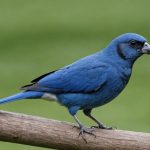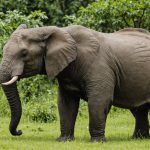Overview of UK Wildlife Protection Laws
In the United Kingdom, wildlife protection laws have a deep historical context, evolving significantly over time to address the needs of endangered species. The primary piece of legislation that provides protection is the Wildlife and Countryside Act of 1981. This act serves as a foundation, not only for safeguarding wildlife habitats but also for listing species protected by law, thereby aiming to prevent extinction.
Over the years, amendments to such laws have been crucial to adapting to the changing conservation landscape. The legislation is a comprehensive framework that targets offenses like illegal trading or harming protected species, emphasizing the seriousness of wildlife crime.
Also read : Unveiling marine conservation education for uk youth: innovative programs raising awareness among children
Enforcement practices are crucial. They ensure the effectiveness of these laws by facilitating monitoring and execution through government bodies and organisations. However, challenges remain, including limited resources and the need for more stringent penalties and deterrents.
Initiatives to tackle these issues involve training enforcement officers, raising public awareness, and employing technology like drones and surveillance for effective monitoring. Although progress is being made, there is a continued call for enhanced practices and resources to meet current conservation challenges head-on.
In the same genre : Revitalizing endangered species: a landowner”s essential guide to restoring natural habitats in the uk
Case Studies of Legal Actions Against Poaching
Studying successful legal actions provides valuable insights into combating poaching. In recent years, notable prosecutions have highlighted effective legal measures in the UK. For instance, prosecutions involving the illegal trade of ivory and rhino horns have led to substantial sentences, deterring potential offenders. Such cases emphasize the importance of stringent legal responses to curb wildlife crime.
Notable Prosecutions
A prominent case involved a convict who received a significant prison sentence for smuggling endangered species products. This landmark ruling showcased the judiciary’s commitment to enforce wildlife laws robustly, setting a precedent for future cases.
Collaborative Efforts between Organizations
Critical to these legal victories is the collaboration between NGOs and government bodies. Organisations like the Wildlife Crime Unit actively work with law enforcement, providing intelligence and resources that bolster investigation efforts. Such synergy maximizes the effectiveness of legal actions against poachers.
Lessons Learned from Past Cases
Analyzing past wildlife crime case studies reveals essential lessons. One key insight is the need for enhanced cross-border efforts, as poaching often involves international networks. Moreover, transparent communication between stakeholders ensures a unified front, improving the odds of successful prosecutions and advancing wildlife conservation goals.
Impact of Poaching on Endangered Species
Poaching impact on the UK’s wildlife has significant ramifications for both biodiversity and ecosystem health. Recent endangered species statistics reveal a worrying trend in poaching incidents, with certain species facing acute threats. For instance, the illegal taking of bats and birds of prey persists despite protective laws. These illegal activities destabilise ecosystems, disrupting food chains and natural balances.
Poaching not only decimates species numbers but also threatens the genetic diversity essential for species’ survival and adaptation. The loss of a single species can result in cascading effects that may lead to the decline of other interdependent species.
Several case studies provide insight into the severity of conservation challenges posed by poaching. One significant event involved the illegal harvesting of rare plant species from protected areas. This highlights the complex nature of poaching, affecting not only animal species but entire ecosystems.
These issues underscore the urgent need for robust conservation measures to be implemented by policymakers. Enhanced monitoring, stricter penalties, and international collaboration are critical to countering the detrimental impact of poaching on biodiversity. In advocating for stronger conservation efforts, stakeholder engagement is crucial to creating effective, long-term solutions.
Reforms and Policy Improvements
In recent years, the UK has explored potential policy reforms to strengthen wildlife protection in light of growing conservation challenges. Evaluating existing legal frameworks reveals opportunities for enhancement, aligning them with the dynamic nature of wildlife crime.
One key consideration is improving cross-border collaboration to address transnational poaching networks. Comparing UK’s wildlife protection standards with international counterparts exposes areas where the UK can bolster its laws. For example, adopting more stringent penalties for wildlife offenses could deter poaching activities and better align with global conservation goals.
Furthermore, current legal frameworks could benefit from integrating cutting-edge technologies into enforcement strategies, enhancing the capacity to monitor and prevent illegal activities. Drone surveillance and data analytics stand out as essential tools for detecting and responding swiftly to poaching incidents.
Policymakers are encouraged to engage with stakeholders, including conservationists and local communities, to develop comprehensive wildlife conservation strategies. This collaborative approach ensures policies are practical and effective on the ground.
Recommendations for policymakers encompass adopting international best practices and implementing robust enforcement mechanisms. By addressing existing gaps, the UK can establish more comprehensive protective measures, safeguarding its rich biodiversity for future generations.
Roles of Organizations Fighting Wildlife Crime
In the UK, many wildlife conservation organizations are dedicated to mitigating wildlife crime. These entities play pivotal roles in protecting precious ecosystems and endangered species.
Government Agencies Involved
Government agencies like Natural England and DEFRA are primary enforcement bodies tasked with maintaining wildlife laws. They regulate and monitor wildlife protection activities, ensuring legislation compliance. With predefined protocols, they act swiftly when wildlife offenses occur, demonstrating their authority in the field.
Non-Governmental Organizations
NGOs play a crucial role in wildlife conservation by complementing government efforts. Organizations such as the Wildlife Trusts and RSPB provide expertise and resources, helping to implement strategies that enhance conservation practices. These NGOs often spearhead awareness campaigns, mobilise volunteers, and engage in policy advocacy to strengthen protections.
Community Engagement Initiatives
Local communities are increasingly viewed as integral to wildlife conservation strategies. Community engagement initiatives have shown that when people are informed and involved, protection efforts become more effective. By participating in local conservation projects, they contribute to safeguarding natural habitats. Encouraging local stewardship fosters a sense of responsibility, transforming communities into vigilant custodians of their environments.
Practical Strategies for Stakeholders
Implementing effective conservation strategies requires active stakeholder engagement and community involvement. One practical approach is harnessing local knowledge to identify critical areas threatened by poaching, allowing for tailored conservation efforts. Regular workshops can serve as platforms for sharing insights and skills, empowering communities to contribute to preservation activities.
Community-based initiatives, such as citizen science projects, encourage locals to participate in data collection and monitoring efforts. Such projects not only boost engagement but offer valuable insights into habitat conditions and species behavior. Schools and local groups can partner to develop educational campaigns, promoting awareness about the impact of wildlife crime.
To bolster these efforts, it’s vital to establish stakeholder forums, fostering collaboration among government bodies, NGOs, and local communities. These forums act as conduits for sharing resources, coordinating actions, and addressing regional conservation challenges effectively.
Raising public awareness through social media campaigns and local events also plays a crucial role in influencing public perception and mobilising support. Educational programs targeting diverse audiences, from schoolchildren to policy influencers, help instil a deeper understanding of the importance and urgency of preserving biodiversity. These multifaceted strategies, when combined, create a robust framework for sustainable wildlife conservation.












